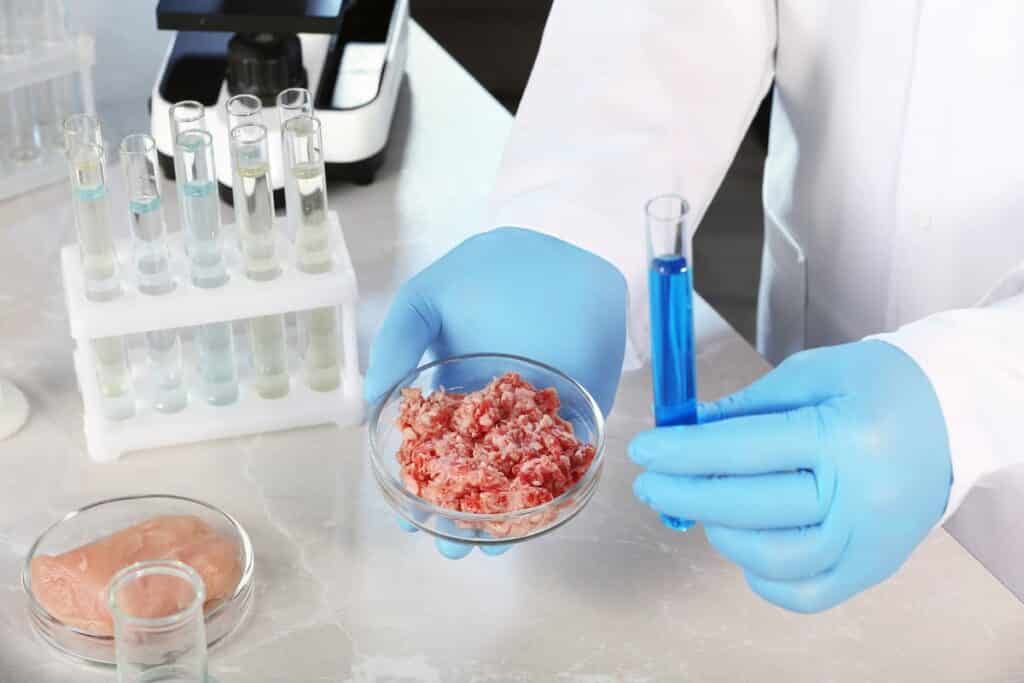8 Alternative Protein Sources to Meat and Dairy
Table of contents
Table of contents

When did food become so complicated? There are dozens of diet fads out there with names that seem like they were based on vanished civilizations from the time of Conan – Keto, Dukan, Optavia. Science seems to flip-flop between glorifying and demonizing everything from coffee to fat. In some circles, meat has become public enemy No. 1 due to environmental concerns, mainly focused on methane, but raising livestock is also water intensive and requires a lot of work to manage. Others are turning away from animal-based protein sources for health or ethical reasons. At the same time, demand for animal-based protein is projected to increase as the population nears 10 billion people by mid-century, even as millions already face food insecurity, particularly across Africa. In other words, there’s no lack of reasons for developing alternative protein sources to meat.

Personally, we’re not too keen on spending the rest of our lives subsisting of liquid meal replacements like soylents as our primary source of protein and nutrients. Fortunately, there’s a whole new generation of biotech companies brewing, baking and building alternative protein sources that might someday match meat and dairy in both texture and taste. We’ve covered some of these companies that are working on so-called fake food or clean meat before. In this article, we list down some of the different types of alternative proteins available and some of the companies working in each space. Let’s start with some of the really weird ones.
Alternative Protein from Microbes

Alternative Protein from Methane
It turns out that methane can be environmentally useful, after all. We’ve come across several startups converting methane to protein. The concept is not unlike that proposed by Sustainable Bioproducts, but in this case, the bacteria live on a steady diet of methane that they are able to metabolize, converting some of that energy into more complex molecules that we might eventually call food.
Founded in 2011, Silicon Valley’s Calysta Energy has raised $88 million for its methane-based alternative protein source. One of its biggest investors is Cargill, which also collaborated with Calysta on building a factory a couple of years back. So far, the end product is only used as feed, mainly in the aquaculture industry. The company calls its methane-munching microbe concoction FeedKind, which contains 71% crude proteins. The company says an independent party evaluated FeedKind and found that it uses between 77% and 98% less water than alternative ingredients such as soy and wheat proteins. It also claimed that Atlantic salmon get fatter faster on FeedKind versus fishmeal.

Other competitors include London-based Unibio and its Uniprotein, and String Bio out of India, which hopes to leverage waste greenhouse gases and eventually produce an alternative protein source for humans out of methane-fed microbes.
Brewing Alternative Proteins from Engineered Microbes
So far, all of these techniques converting microbes to “meat” is based on fermentation technology, not unlike how you brew great-tasting beer. Instead of the yeast turning sugar into alcohol in the case of beer, these microorganisms are converting sugars or even methane into proteins.
That’s also the case with Boston-based Motif Ingredients, a spinout from Ginkgo Bioworks that raised $90 million last month and also counts Breakthrough Energy Ventures as an investor. The difference is that Motif, with access to Ginkgo’s biological foundries, will make all sorts of proteins using engineered microbes. Just got back from a crossing of the Sahara Desert? How about some camel milk? Motif notes that it could brew up functional products, like platypus milk, which recent research shows contains a protein that could potentially kill superbugs.
Alternative Protein from Fungi
Moving slightly up the food web brings us to mushrooms. Technically, we’re generally talking about mycelium, which is the thread-like “roots” of mushrooms or other fungi. We recently wrote about how a company called MycoTechnology is using this product to make a sugar substitute, as well as an alternative protein source from shiitake mycelium. The protein product from mycelium is called mycoprotein, which is the main ingredient in the well-known line of Quorn vegetarian products. Basically, you’re eating mold in the shape of a chicken nugget, which could be a problem for those with mold allergies or taste buds.



Alternative Protein from Microalgae

You might recall that San Francisco-based Hampton Creek, which changed its name to “Just” because of a string of bad PR, started out in the mayo biz in 2011. It has since raised about $220 million and is reportedly on the prowl for another $200 million. The takeaway: People love their mayo.
Alternative Protein from Insects

Update 05/20/2020: NextProtein has raised $11 million in Series A funding. This brings the company’s total funding to $12.6 million to date.
Alternative Protein from Plants
Plant-based proteins are obviously the most mainstream of the alternative protein sources. You don’t have to look any further than the impending IPO from Beyond Meat to see that plant-based protein is big business. The bright minds at data research firm CB Insights value the plant protein market at $11 billion. One of the hottest alternative protein sources is probably peas.

Alternative Protein from Stem Cells
Finally, the ultimate alternative protein to meat may just be … meat grown in a lab. A number of companies have emerged in recent years that are attempting to culture cells from cows, chickens, and fish, into something both edible and affordable. We’ve covered a number of these startups already – and companies like Just are pivoting into the market – but there are always new players to cover. Like Meatable out of the Netherlands, which was founded just last year with $3.5 million. While we already added Meatable to our lab-grown startup list, that was before we had details about its technology. And it could be a game-changer: Meatable proposes to grow meat in the lab without using animal cells. Instead, it will employ pluripotent stem cells, which can turn into any type of cell, according to an article in Business Insider. Vegetarian can have their steak and eat it, too.
Conclusion
Methane, microbes, microalgae – who knew there were so many alternative protein sources? Some are obviously highly experimental and niche, while others like those peddling plant-based burgers and milks are rapidly maturing. Rather than fight the inevitable, big Ag and food companies like Cargill are hedging their bets with some serious investments and acquisitions. The upcoming Beyond Meat IPO should offer a barometer into the public’s appetite for these alt meat companies.
Sign up to our newsletter to get more of our great research delivered straight to your inbox!
Nanalyze Weekly includes useful insights written by our team of underpaid MBAs, research on new disruptive technology stocks flying under the radar, and summaries of our recent research. Always 100% free.














